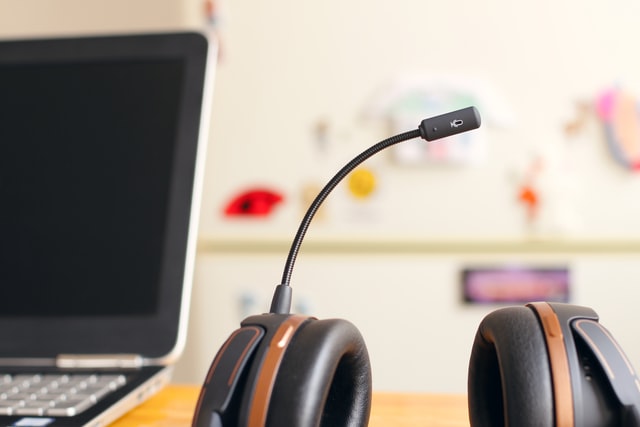It feels as though, for many years now, the desktop has stolen the show in the world of PC gaming. Of course, there is no denying that it offers a num
It feels as though, for many years now, the desktop has stolen the show in the world of PC gaming. Of course, there is no denying that it offers a number of benefits to players. For one thing, it is highly customisable – much more so than any other popular platform on the market today, from mobiles to bulky consoles – and, for another, it supports a much more flexible approach to gameplay itself, supporting both keyboard and controller-based gameplay.
There are, however, plenty of downsides that gamers need to weigh up when choosing whether or not to commit themselves to the desktop (and, along with it, the desk). The versatility and convenience offered by the gaming laptop is hard to ignore, and many gamers continue to choose to sacrifice a little power and speed in favour of a device that supports their habits on the go, as well as when they are relaxing at home.
As with any investment, though, finding the right device worthy of your hard earned cash isn’t always a walk in the park. To avoid disappointment, read more below about five features to look for in a new gaming laptop than are more important than design and battery life.
Screen Size
When you’re at home, you can always hook your laptop up to an external monitor in your home-office and blow up the display to cater to a more immersive and intensive experience but, on the go, you will be limited to what the built-in screen can offer.
Of course, the ideal screen size is largely subjective. The Switch – Nintendo’s second best-selling console of all time – boasts a 6.2 inch screen, while the average TV is more than 45 inches. You won’t be as far away from your laptop as the average console gamer is from their TV, and you (hopefully) won’t be as close to it as you would a handheld console like the Switch, or your phone.
As a result, settling somewhere in the middle and option for a screen between 15 and 18 inches will ensure that you get the most out of the graphics, without going overboard. Part of the beauty of the gaming laptop is its portability, and opting for an oversized screen makes it much more difficult – and much riskier – to move it from place to place.

RAM
Your gaming laptop’s RAM, or Random Access Memory, plays a pivotal role in ensuring smooth and seamless gameplay, especially when multitasking or running high-demand games. With capacities typically ranging from 8GB to 32GB, a higher RAM capacity can greatly boost your gaming performance.
Overclocking capabilities of RAM can enhance the speed and latency performance of your system, but it’s important to take compatibility issues into account. Not all laptops support all types of RAM, and choosing DDR5 over DDR4 may provide faster data transfer rates, improving your gaming benchmarks.
Heat management is crucial when overclocking your RAM as it can generate extra heat. It’s crucial to have a strong cooling system to prevent overheating. Upgrade options are also important, allowing you to future proof your gaming laptop by adding more RAM as games become increasingly demanding.
Brand reputation shouldn’t be overlooked. Renowned brands often offer reliable and high-performing RAM modules. Finally, remember that dual-channel RAM configurations can enhance system responsiveness, contributing to a more immersive gaming experience. With the right RAM, you aren’t just purchasing a piece of hardware; you’re investing in a seamless, high-speed gaming experience.
Resolution
Resolution is another way of referring to the number of pixels available for producing the images on screen. While the average workaday PC might feature just 1366 x 768, the recommended resolution for a laptop used to play games is around 1920 x 1080. This will ensure that graphics are clean and crisp when attempting to load up a vast open-world like World of Warcraft.
It is becoming increasingly rare for a laptop to offer a resolution below what is recommended for gamers, but you may still run across one – particularly in the bargain section – so keep an eye out, and avoid a low res PC.
The display technology of your laptop affects resolution, with modern tech supporting Full HD, QHD, and 4K. However, these higher resolutions may cause performance impact, making your games run slower due to more pixels being rendered by your GPU. To counteract this, most gaming laptops offer scaling options, letting you adjust the resolution based on the game’s demands and your system’s capabilities.
Refresh rates and aspect ratios also tie into resolution. Higher refresh rates deliver smoother visuals, while different aspect ratios can offer wider fields of view. Yet, these can lead to compatibility issues with certain games and require more powerful hardware.
Future trends point towards even higher resolutions, possibly pushing the need for more advanced GPUs. Luckily, customization options allow you to tweak settings to find a balance between performance and visuals, ensuring you can enjoy high-resolution gaming today while keeping an eye on tomorrow’s trends.
Cost
We all head out into the world of gaming laptops with different budgets in mind, and balancing our expectations with our wallets takes plenty of trial and error. taking into account plenty of factors such as GPU, RAM and display. Luckily there are affordable options at grade a refurbished tech, who have a fine collection of high-spec laptops, refurbished and new.
Bear in mind that there are plenty of opportunities for upgrades, too. While the laptop doesn’t lend itself to customisation to quite the extent that the desktop does, there is still room for manoeuvre in terms of your RAM and external graphics card.
GPU and CPU
Unlike your RAM, you won’t be able to upgrade your GPU and CPU – otherwise known as your graphics and computer processing units – at a later date, so it is important that you choose wisely at the outset. The strength of the GPU you choose will hold a great deal of sway over the actual performance of games on your laptop, so this should be a priority for any searching for a new device.
These powerhouses determine your gaming performance, multitasking capabilities, and power consumption. Your GPU, responsible for stunning visuals, requires an impressive overclocking potential for lag-free gaming. Meanwhile, the CPU, managing game logic and AI processing, necessitates robust thermal management to prevent overheating.
Nowadays, the general consensus is that we should focus more on the GPU offered by a potential gaming laptop than on the CPU. You can find a more in-depth guide to the difference between the two from Nvidia’s own blog here.
Bottleneck prevention is important. A powerful GPU with a subpar CPU or vice versa could restrict your laptop’s performance. It’s like having a sports car engine in a compact car; it won’t deliver its full potential. So, compatibility between these components is critical. It’s also worth considering cooling solutions, as overheating can throttle both GPU and CPU performance.
Conclusion
In your hunt for the ultimate gaming laptop, don’t compromise on screen size, RAM, resolution, cost, or GPU and CPU. Remember, it’s not just about a big screen, but clarity too.
Ample RAM and a powerful GPU and CPU combo are non-negotiable for seamless gameplay. While cost is a consideration, don’t skimp on quality. Your dream gaming laptop is out there; just make sure it ticks all these boxes.
Happy gaming!



















































































































COMMENTS